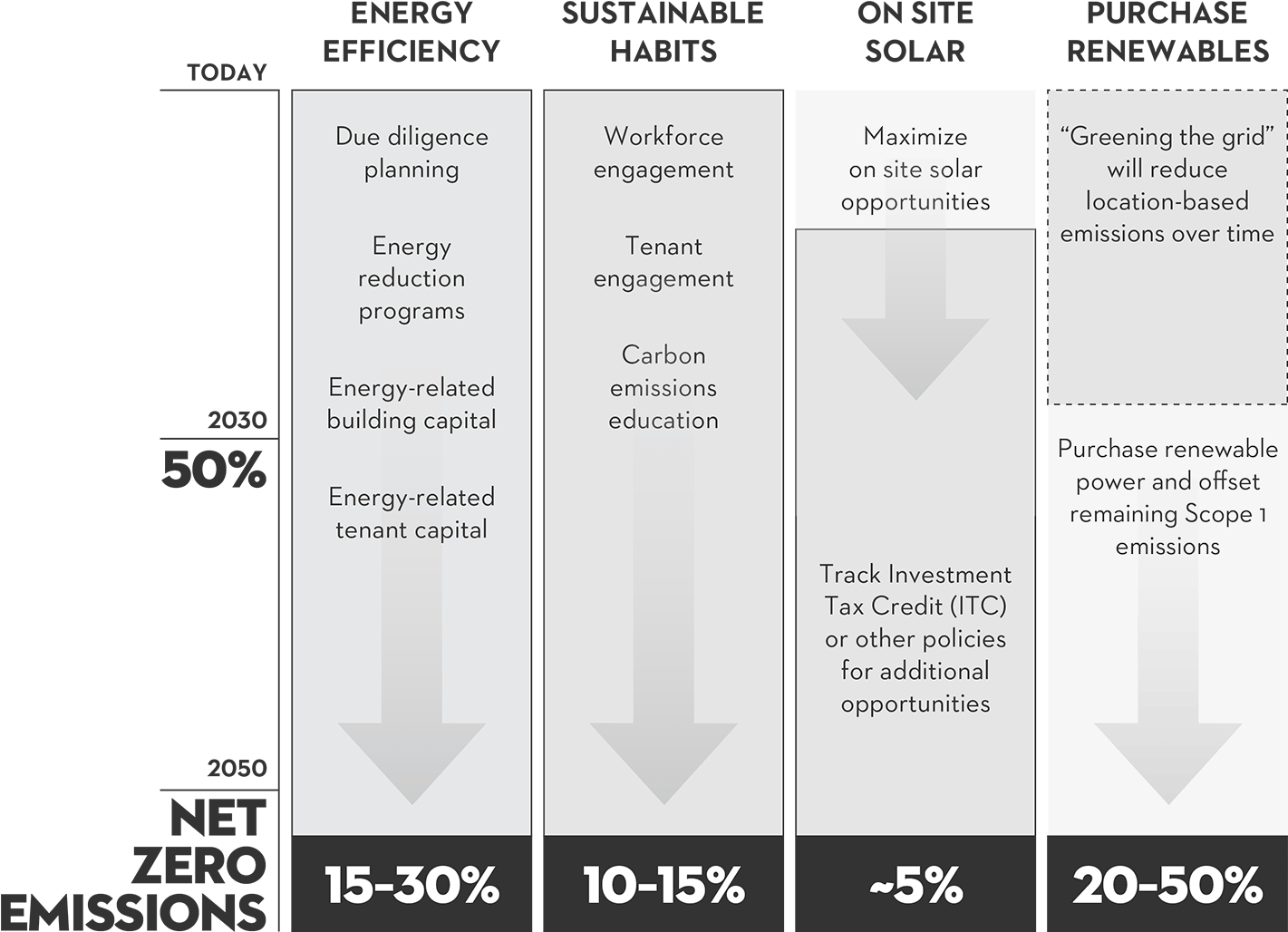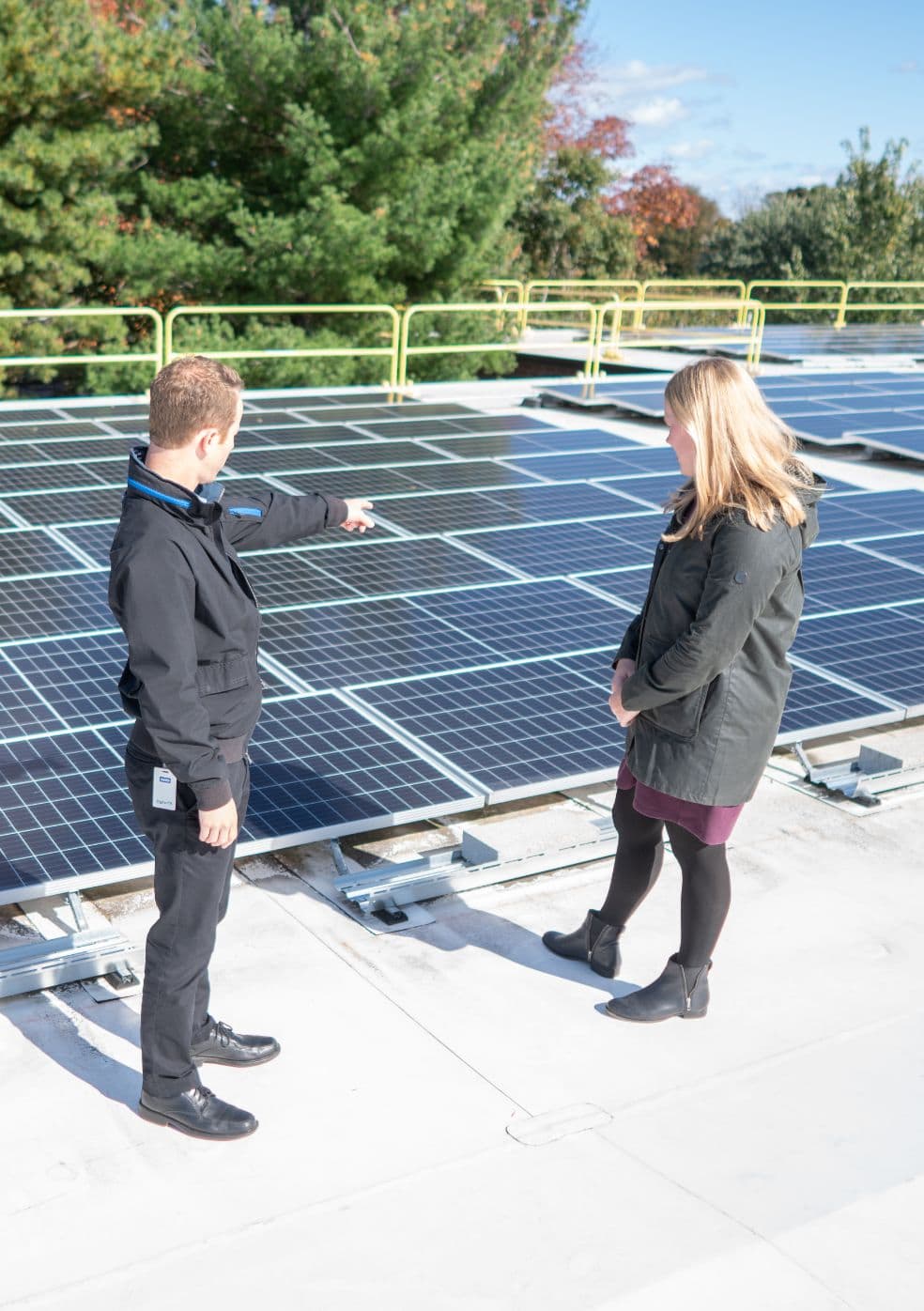Environmental Leadership
Leadership in environmental best practices—building in resilience to environmental hazards, extreme weather and changing markets—has been synonymous with strong performance and value creation at RMR for years.
We began tracking energy use, water consumption and waste diversion across the company in 2009. Our accumulated track record on green building certifications, such as ENERGY STAR®, and the tools we use for monitoring performance and data collection make us leaders in the commercial real estate industry.
In 2021, we introduced RMR’s Zero Emissions Promise. That commitment, part of a set of revised targets to further reduce energy use, GHG emissions, water consumption and waste to landfills, sets us on a path to achieve our goal of being net zero emissions by 2050, in alignment with the Business Ambition for 1.5°C. In conjunction, we’ve also increased the rigor of our reporting and alignment with the recommendations of the Task Force on Climate-Related Financial Disclosures (TCFD).
achieve net zero emissions

Environmental Leadership Highlights
Taking the long view, like we own it, is the principle that guides RMR’s leadership in energy and environmental management. It informs all of our activities, from data capture and reporting, to how we meet the needs of our clients and their tenants.
The timing for setting new GHG emissions reduction goals was opportune given the increased attention around mandating climate-related disclosures. This was a strategically important move to make with science based emissions targets and strategies increasingly considered best practices for companies that are able to contribute to mitigating climate change.


